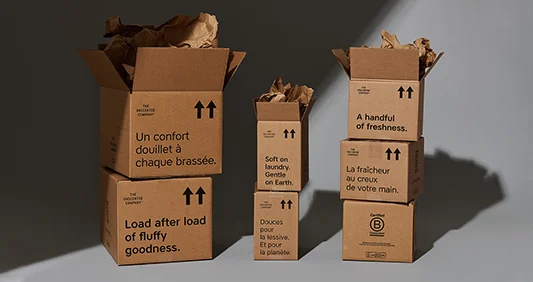In a world increasingly focused on environmental conservation, the concept of reusing packaging materials is gaining momentum as a powerful strategy for reducing waste and minimizing our ecological footprint. This sustainable practice not only benefits the environment but also offers businesses and consumers tangible advantages in terms of cost savings, resource conservation, and a positive impact on brand image.
1. Reducing Environmental Impact:
The primary and most evident benefit of reusing packaging materials is the substantial reduction in environmental impact. By extending the lifespan of packaging materials, we diminish the need for constant production of new materials. This, in turn, helps conserve valuable resources, reduce energy consumption, and decrease the overall carbon footprint associated with manufacturing new packaging.
2. Minimizing Waste Generation:
The “reduce, reuse, recycle” mantra is at the forefront of sustainable practices. Reusing packaging materials directly addresses the “reduce” aspect by minimizing the creation of additional waste. By choosing to reuse materials, businesses and consumers contribute to lessening the burden on landfills and incinerators, fostering a more circular and eco-friendly approach to packaging.
3. Cost-Efficiency for Businesses:
Beyond environmental benefits, reusing packaging materials presents a compelling economic advantage for businesses. Adopting a strategy of reusing materials can result in significant cost savings. Instead of continually investing in new packaging, businesses can optimize their resources by leveraging existing materials, contributing to a more sustainable bottom line.
4. Consumer Appeal and Brand Image:
As environmental consciousness grows among consumers, businesses that actively promote and practice packaging reuse demonstrate a commitment to sustainability. This, in turn, enhances brand image and appeals to a consumer base increasingly inclined to support eco-friendly practices. Sustainable packaging choices become a key differentiator in a competitive market.
5. Creative and Customizable Solutions:
Reusing packaging materials doesn’t mean sacrificing creativity or customization. Businesses can implement innovative and aesthetically pleasing solutions by repurposing materials in unique ways. This not only adds a personalized touch to packaging but also showcases a commitment to sustainability through inventive and resourceful practices.
6. Community and Supply Chain Collaboration:
Embracing packaging reuse often involves collaboration within communities and supply chains. Businesses can establish partnerships with suppliers, retailers, and even consumers to create a closed-loop system where packaging materials are collected, refurbished, and reintegrated into the packaging cycle. This collaborative approach fosters a sense of shared responsibility for sustainability.
7. Educating and Encouraging Consumer Participation:
Encouraging consumers to participate in packaging reuse programs is an essential aspect of the strategy’s success. Providing information on the benefits, setting up collection points, and offering incentives can inspire consumers to actively engage in sustainable practices, creating a positive ripple effect throughout the community.
In conclusion, the adoption of Half Price Packaging reuse practices represents a powerful and versatile solution for businesses and consumers alike. By embracing this sustainable approach, we contribute to a healthier planet, foster economic efficiency, and build a more conscious and responsible consumer culture. The path to a greener future starts with a simple yet impactful choice: reusing packaging materials.
8. Flexibility in Packaging Design:
Reusing packaging materials allows for flexibility in design and presentation. Businesses can experiment with various combinations and configurations, creating packaging solutions that are not only eco-friendly but also visually appealing. This adaptability fosters a culture of innovation and continuous improvement in sustainable packaging practices.
9. Extended Product Lifespan:
The durability of packaging materials often exceeds the lifespan of a single product. By reusing these materials, businesses contribute to extending their functional life. This not only conserves resources but also ensures that packaging materials serve their purpose to the fullest, aligning with the principles of a circular economy.
10. Government and Regulatory Support:
Governments and regulatory bodies worldwide are increasingly recognizing the importance of sustainable practices. Many are implementing policies and incentives to encourage businesses to adopt packaging reuse strategies. By aligning with these initiatives, businesses not only contribute to global sustainability goals but also position themselves favorably within evolving regulatory landscapes.
11. Educational Opportunities:
The adoption of packaging reuse opens avenues for education and awareness. Businesses can use this opportunity to inform consumers about the environmental impact of packaging waste and the tangible benefits of reusing materials. This educational aspect contributes to building a more informed and environmentally conscious consumer base.
12. Waste Reduction in E-Commerce:
In the era of online shopping, where packaging waste is a significant concern, the reuse of materials becomes even more critical. Implementing packaging reuse strategies in e-commerce can substantially reduce the environmental footprint associated with the shipping and delivery of products, addressing a growing sustainability challenge.
13. Encouraging Circular Economy Principles:
Reusing packaging materials aligns seamlessly with the principles of a circular economy—a regenerative system where resources are kept in use for as long as possible. By embracing packaging reuse, businesses actively contribute to breaking the traditional linear economy model and moving towards a more sustainable and circular approach.
14. Scalability Across Industries:
The concept of packaging reuse is scalable across diverse industries. Whether in the food and beverage sector, retail, or manufacturing, businesses can tailor packaging reuse strategies to suit their specific needs. This adaptability ensures that sustainability practices can be integrated seamlessly into various business models.
15. Global Environmental Impact:
While the impact of individual packaging reuse efforts may seem small, collectively, they contribute to a more significant global environmental impact. Every business and consumer participating in packaging reuse becomes part of a collective movement toward reducing waste, conserving resources, and mitigating the environmental challenges associated with traditional packaging practices.




